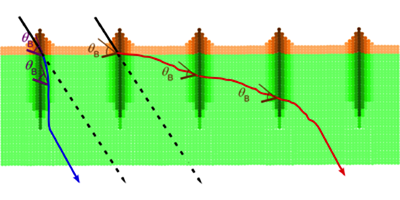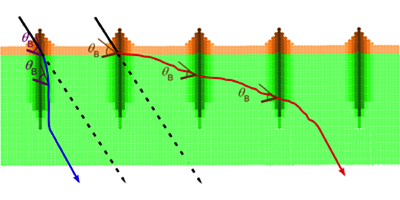X Rays with a Berry Twist
X rays pass easily through many materials, which makes these photons useful for imaging but also hard to control, limiting the development of x-ray optics. Inspired by how visible light can be manipulated in photonic crystals, researchers are studying ways to engineer materials at the atomic scale to achieve better control on x-ray photons. In a paper in Physical Review Letters, Yoshiki Kohmura at the RIKEN SPring- Center, Japan, and colleagues, report on the use of a lattice deformation method that allows controlling the translation of an x-ray beam.
In 2006, researchers predicted that a tiny bend imposed on a crystal lattice could result in a sideways translation of an x-ray beam that was times larger than the crystal deformation. The extreme shifting is caused by the Berry-phase effect: a geometric phase shift occurring when the x-ray beam hits the crystal at an angle slightly lower or higher than that required for Bragg scattering. This was demonstrated by a team at the SPring- synchrotron, who observed millimeter beam shifts of x rays passing through a silicon crystal whose curvature was monotonically deformed by only nanometers (see 14 June 2010 Viewpoint).
Now, researchers at the same lab have achieved a larger x-ray beam translation in a crystal with an undulating, rather than uniform, deformation. Kohmura et al. grew germanium quantum dots on a silicon crystal; the lattice mismatch between the two materials causes an undulating lattice deformation. Depending on where the incident x rays hit the deformation (giving different angles of incidence), the beams were shifted in two different directions. This effect may be used to measure crystal strain fields in heterostructures, or to realize beam splitters that separate incoming x rays into two parallel beams, for applications to interferometry and pump-probe studies. – David Voss





